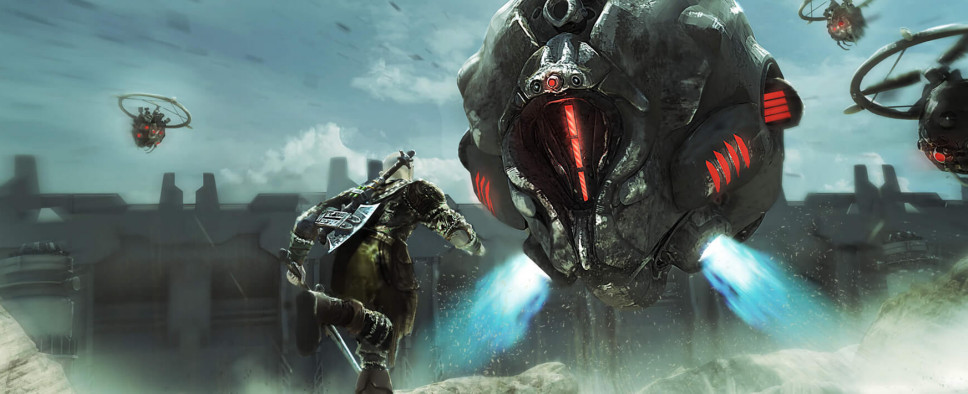Piranha Bytes Game Engine History
-
Category: News ArchiveHits: 5659

It's a shame that we don't often hear about the technological wizardry behind many of our favorite games, so it's great to see this article on World of ELEX that takes us through the early beginnings of Piranha Bytes' ZenGin engine for the original Gothic, the considerations that led to the abandonment of the Gamebryo engine for Gothic 3, the Genome engine that was ultimately created for Gothic 3 and used again for the Risen series, and the engine improvements that the team has been working on for the forthcoming release of ELEX. Beyond the engines used, the article also takes us through the release of each of these games, their reception, and the work that fans have done to improve upon them:
For Risen 3 Piranha Bytes has improved on the engine from Risen 2: The renderer may stayed with DirectX 9, but was switched to a full deferred renderer, also physically based shading was integrated. Because of that surfaces and materials like stone, metal, water, leather and so on could be rendered more realistically. Further improvements were new shadows, which didn't flicker anymore, and in Risen 3 soft shadows again. The volumetric fog was expanded with volumetric fog shadows, which creates a godray effect, so the volumetric lighting was improved as well. Furthermore there was a new water simulation, which allowed ship battles in Risen 3. The LoD was improved and the morphing of the vegetation was fixed. There was physics for cloth and objects like barrels as well and wet looking surfaces at rain. With the help of motion capturing for gestures and new created animations their quality was improved. Last, the object density was increased, too.
Instead of having to set waypoints manually this was done by the engine now, which reduced the amount of work by the developers. Also Risen 3 used a self programmed technology for occlusion culling again, which removes non visible objects from the calculations. Through engine optimizations the performance was on the level of Risen 2 on average, despite the better graphics, and sometimes even better, because in Risen 2 the shadows took a huge toll on performance. The multicore support and the streaming were improved, too. The console versions were made by Piranha Bytes this time in coopertation with a second developer and turned out okay at least.
A year later the Risen 3: Enhanced Edition was released for PC and PS4 - Piranha Bytes' first game for the new generation of consoles, which ran a lot better here. The Enhanced Edition had been ported by Piranha Bytes themselves again and included some graphical improvements. The engine requires a 64 bit system since then, which allowed for higher resolution textures and higher draw distances, which were both improved in the Enhanced Edition. Additionally, a new HDR bloom was introduced, as well as a new depth of field effect with bokeh and a new physically based cloud rendering.
The Risen 3: Enhanced Edition also prepared for Elex, which will be released in the first quarter of 2017 on Playstation 4, Xbox One and Windows starting with version 7. Publisher this time isn't Deep Silver anymore, but THQ Nordic (former Nordic Games). Elex is going to be a post-apocalyptic science fantasy RPG with a completely open world, which will be 1.5 times the size of Gothic 3. Again Piranha Bytes is doing the ports themselves and has further improved their engine to make their vision reality - and we have gotten exclusive informations by Piranha Bytes about the changed made to the engine. Piranha Bytes have improved their streaming technology even further, because no loading screen should disrupt the game flow. In order to do so, Piranha Bytes has separated the world into static and dynamic objects, and static objects can neither move nor are they saved in savegames. The static scenery is stored memory and performance efficient and loaded in the background, while the dynamic scenery is loaded at the game's start. In order for Elex to profit more heavily from more processor cores, Piranha Bytes have parallized the whole rendering. Additionally, the game logic is running in parallel to the rendering as well. Furthermore an additional waypoint based system was placed next to the polygon based pathfinding system, which allows for navigating NPCs through the whole game world.
Thanks, Dustin via RPGWatch.

